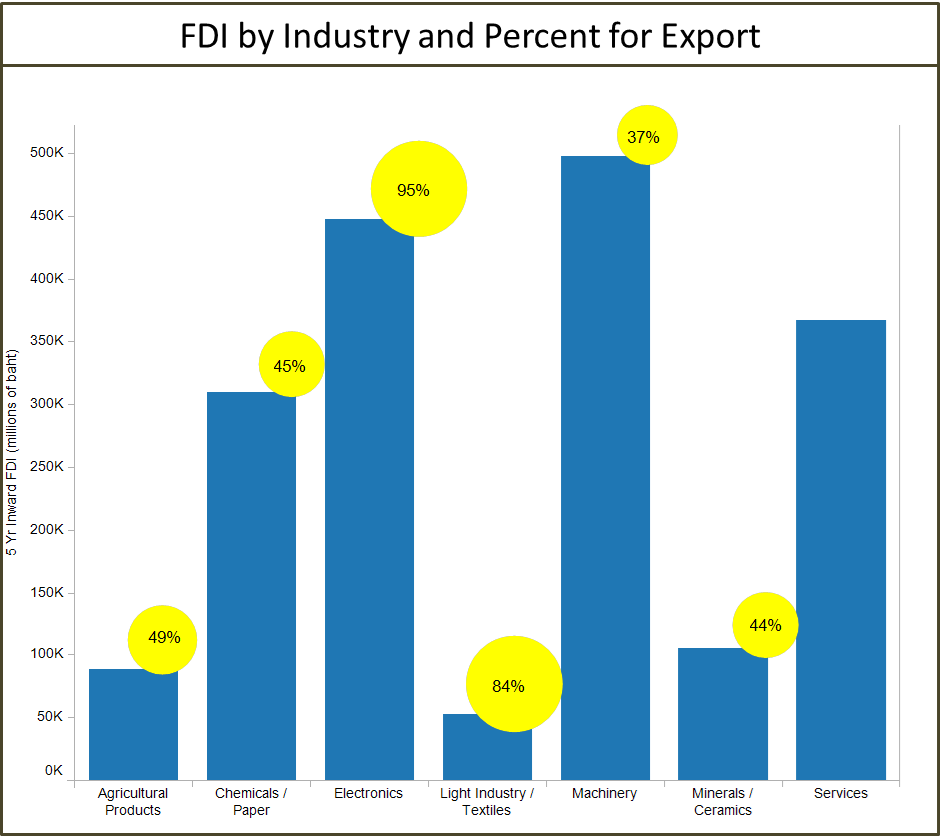Thai Floods are Serious Risk to Economy
 Wednesday, November 16, 2011 at 4:45PM |
Wednesday, November 16, 2011 at 4:45PM |  1 Comment
1 Comment Most articles about the economic impact of the recent flooding in Thailand focused on quantifying the cost of repairing damage. While certainly meaningful short term cleanup costs are much less important than the damage to the country’s reputation amongst multinational manufacturing firms.
Thailand’s economy is heavily dependent on exports of manufactured goods, primarily by foreign multinational firms. Manufacturing contributes 34% of Thai GDP, much higher than peer countries. Most of this manufacturing base is export oriented, with exports of manufactured goods equaling 71% of GDP, compared to 27% in China and less than 15% in Japan, Brazil, or the United States. Export oriented manufacturing is even more important to Thai economic growth and is easily the largest contributor to growth over the last five years. Manufacturing exports are both the economic base and the main economic driver.
Any slowdown in foreign investment will directly impact GDP growth. In the near-term through less construction activity, and medium-term though fewer jobs and exports. You can see from the chart below the majority of foreign investment in Thailand is goods for export to other countries. The percentage designated for foreign markets increases as the products move up the value chain with 95% of electronics investment being export oriented.

Plenty of these companies feel wronged by the actions of the Thai government, and they have a point. The Industrial Estate Authority of Thailand (IEAT), a division of the Ministry of Industry, created all 38 of the country’s industrial estates and manages or co-manages all 38. The IEAT and private investors both own industrial estate assets. The government chose the location of the industrial estates, created federal incentives not applicable outside the estates, and provided inadequate flood preparation. Some companies negatively impacted by the floods will be upset and blame the government. Existing firms are not likely to leave, as the relocation costs outweigh the benefits, but they may decide to expand outside Thailand in the future. Companies and site selection consultants are certainly less likely to consider the country when shopping site selection projects among countries in Southeast Asia.
Reputational risk is even more pronounced for the Ayutthaya Province and its large industrial estates. The historic province, once the seat of the Ayutthaya Kingdom, is one of Thailand’s economic drivers with four large industrial parks popular with multinational manufacturing firms. Manufacturing accounts for 85% of the province’s GDP and 11% of the country’s total manufacturing output.
The government needs to develop a credible plan convincing investors this won’t happen again. Any plan must address improvements in country wide flood management systems and in specific industrial estate defenses. Any plan needs to convince an uninvolved third party the industrial estates will be better prepared next time.

Reader Comments (1)
I found a great...